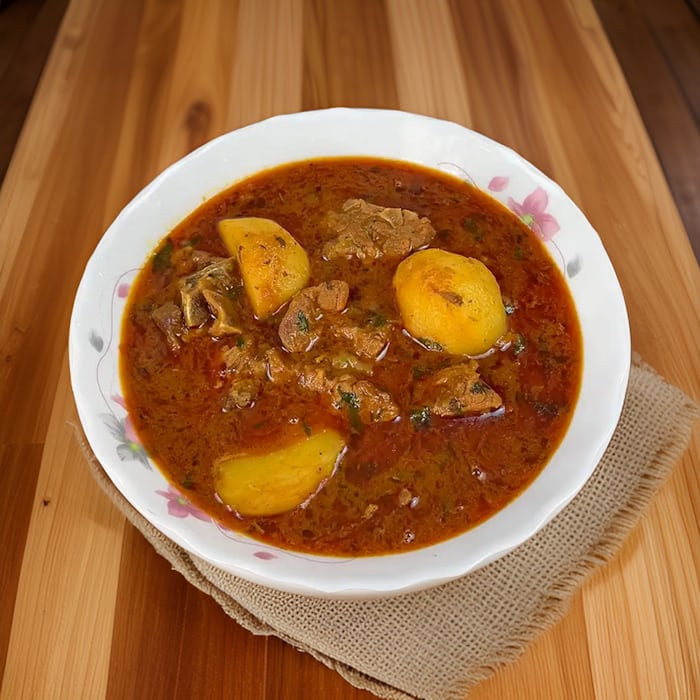Nigerian stew is a cornerstone of West African cuisine, cherished for its rich flavors and versatility.
Even if you are new to Nigerian cooking or looking to refine your skills, this guide will walk you through the essentials of preparing a delicious Nigerian stew.
What Is Nigerian Stew?
Nigerian stew, often referred to as obe ata in Yoruba, is a savory sauce made primarily from tomatoes, peppers, onions, and a blend of spices. It’s a staple in Nigerian households, commonly served with rice, yam, plantains, or various “swallow” dishes like pounded yam and eba. The stew’s depth of flavor comes from the slow cooking process, allowing the ingredients to meld together beautifully.
Key Ingredients for Authentic Nigerian Stew
To create an authentic Nigerian stew, you’ll need the following ingredients:
- Tomatoes: Fresh, ripe tomatoes form the base of the stew.
- Red bell peppers (Tatashe): Adds sweetness and depth.
- Scotch bonnet peppers (Ata rodo): Provides the characteristic heat.
- Onions: Both red and white onions are used for sweetness and flavor.
- Palm oil: Gives the stew its rich color and distinctive taste.
- Seasonings: Bouillon cubes, curry powder, thyme, and bay leaves enhance the stew’s aroma.
- Protein: Common choices include chicken, beef, goat meat, or fish.
- Salt: To taste.
Types of Nigerian Stew You Can Try
Nigerian stew isn’t one-size-fits-all; there are several regional variations:
- Obe Ata: The traditional red stew, often served with rice.
- Ayamase (Designer Stew): A green pepper stew popular in Yoruba cuisine, typically served with Ofada rice.
- Banga Stew (Ofe Akwu): A creamy palm nut-based stew from the Igbo region.
- Efo Riro: A spinach and tomato stew, rich in vegetables and spices.
- Miyan Taushe: A pumpkin-based stew from the Hausa-Fulani region.
Each variation offers a unique taste experience, reflecting the diverse culinary traditions across Nigeria.
Step-by-Step Guide on How to Make Nigerian Stew
Step 1: Prepare the Ingredients
- Blend the vegetables: In a blender, combine tomatoes, red bell peppers, scotch bonnet peppers, and onions. Blend until smooth.
- Season the protein: Cut your chosen meat into bite-sized pieces. Season with salt, curry powder, thyme, and bouillon cubes. Cook until tender, then set aside.
Step 2: Cook the Stew Base
- Heat the palm oil: In a large pot, heat the palm oil over medium heat until it becomes clear.
- Fry the blended mixture: Add the blended vegetable mixture to the oil. Fry, stirring occasionally, until the oil begins to separate from the tomato paste, indicating that the stew is well-cooked.
- Add seasonings: Incorporate bay leaves and adjust salt to taste.
Step 3: Combine and Simmer
- Add the cooked protein: Introduce your pre-cooked meat into the stew.
- Simmer: Allow the stew to simmer for an additional 10-15 minutes, ensuring all flavors meld together.
Pro Tips for the Perfect Nigerian Stew
- Use ripe tomatoes: Ripe tomatoes yield a sweeter, more flavorful base.
- Fry the stew thoroughly: Proper frying enhances the depth of flavor and reduces acidity.
- Adjust the heat: Control the spiciness by varying the amount of scotch bonnet peppers.
- Rest before serving: Let the stew sit for a few minutes after cooking to allow flavors to develop.
What to Serve with Nigerian Stew
Nigerian stew pairs wonderfully with:
- Boiled white rice: A classic combination.
- Yam: Boiled or fried yam complements the stew’s richness.
- Plantains: Fried plantains add a sweet contrast.
- Swallow dishes: Eba, pounded yam, or fufu are traditional accompaniments.
Common Mistakes to Avoid When Making Nigerian Stew
- Using unripe tomatoes: This can result in a sour taste.
- Under-frying the stew: Insufficient frying leads to a raw tomato flavor.
- Overcrowding the pot: This can cause uneven cooking and burning.
- Neglecting seasoning balance: Proper seasoning is key to a flavorful stew.
Storage and Reheating Tips for Nigerian Stew
- Refrigeration: Store leftover stew in an airtight container in the refrigerator for up to 3 days.
- Freezing: For longer storage, freeze the stew for up to 3 months.
- Reheating: Reheat thoroughly before serving. Add a splash of water if the stew has thickened too much.
Frequently Asked Questions About Nigerian Stew
1. Can I make Nigerian stew without palm oil?
Yes, you can substitute palm oil with vegetable oil, though the flavor and color will differ.
2. Is Nigerian stew spicy?
Traditional Nigerian stew has a moderate level of heat, primarily from scotch bonnet peppers. Adjust the quantity to suit your spice tolerance.
3. Can I use canned tomatoes?
While fresh tomatoes are preferred for their flavor, canned tomatoes can be used as a substitute

